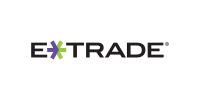Types Of Investments: A Beginners Guide to Asset Classes
Investments come in many different shapes, sizes and risk profiles. From government issued bonds, or gilts as those issued in the UK by HM’s Treasury are called, at one end of the returns to risk scale to small, speculative companies of high potential matched by the equally high risk their shares could lose significant value or become practically worthless at the other. There’s something for every investor appetite and most investors combine different investment classes together in their portfolios in an effort to both manage the risk they are exposed to while generating reasonable to strong returns.
Within the world of institutional investing that is made up of investment banks, pension and insurance funds, hedge funds or wealthy foundations to name just some of the major classes or participants, there is huge variety of investment classes. Many of these are complex and are not permitted to be sold to retail investors - the term given to private individuals that are not professional investors or wealthy enough to be able to afford the highly specialised financial guidance needed to manage those kinds of investment classes, or absorb the heavy losses they can lead to when things go wrong.
But here we’ll stick to a brief explanation of the main kinds of investment available to retail investors investing online. These still carry risk and investors can lose money but over the long term, and particularly as part of a balanced portfolio, that risk is considered to be at an acceptable level. We’ll focus on investments that are tradable and can be bought through an online investment platform and are regulated by the FCA, SEC or other regional regulator. So what are the main investment classes open to you?
Equities
The technical term for company shares, or stock listed on a public stock exchange. Buying equities is taking a small ownership stake in a company. Shares deliver returns to investors in 2 ways. They are either pay dividends, which means they return some of their profits to investors who own shares in them, or their value increases between when the investor buys and sells them. That’s referred to as ‘capital gains’.
Because they are traded on a stock exchange, equities gain or lose value depending on investor demand for them. If investors believe that the company’s current performance or future prospects are likely to support increased revenue and profits they will be prepared to pay more for them, pushing up the stock exchange trading price. If the opposite is true, demand at current prices will drop meaning that existing investors who want to sell will have to lower their asking price, pushing the value of the shares down. So investing in equities, or shares, is a bet that the issuing company will either pay steady dividends or grow its revenues and profits.
Bonds
When you buy shares you are buying, as the name of the investment suggests, a share of ownership in the company that has issued the equity. A very small share if it’s one but a share nonetheless. With bonds, you buy the issuer’s debt. In effect, you are lending the bond issuer your money against an interest rate in a similar way to if you were to take out a loan from the bank. The interest paid to a bond holder by the issuer is called a ‘coupon’.
Bonds usually, though not always, offer a fixed interest rate for a fixed period of time, which can be anything between a year or two to 20 or even more. The bond’s coupon is paid to the holder at agreed intervals as long as they hold the bond, which is either until it is sold on or reaches its redemption date. At a bond’s redemption date, the initial investment is repaid to the bond holder and the debt is closed. While bonds have a fixed ‘face value’, which is the value of the initial investment, and usually a fixed interest rate which is a percentage of its face value, their value on the resale market fluctuates based on demand. So if demand for a bond is high, pushing up its value compared to its ‘face value’, the interest rate return goes down and vice versa up if demand falls meaning the holder has to sell it for below its face value if they choose to do so.
As is normally the case with interest rates, the ‘coupon’ that a bond offers corresponds to the perceived risk. As debt, the risk to the investor is that the issuer at some point lacks the solvency to pay either the coupon or redeem the bond’s face value. So the lower the credit rating of the issuer, the higher the coupon offered. Coupons on longer term bonds also tend to be higher than those on shorter term redemption dates as the longer the period the higher the risk of the circumstances of the issuer changing.
There is a relatively wide variety of different kinds of bonds but they can be broken down into three main categories:
Government-issued bonds (those issued by the UK are called ‘gilts’ and by the Federal Reserve in the USA ‘Treasuries’). These are considered ‘safe haven’ investments, especially if issued by a country with a stable economy and political environment. As such they pay low coupons but are popular with investors as a ‘stabiliser’ in a portfolio as when other markets hit turbulence they become more popular and resale values rise.
Corporate bonds issued by big, blue chip companies typically pay higher coupons that government bonds but are still generally considered a safe investment as it is extremely unusual for them not to be honoured.
Finally, ‘junk bonds’ are issued by companies that are not as well established as the biggest blue chips. It’s still not common for such bonds to not be honoured but it does happen if companies run into trouble. As such these bonds pay a much higher ‘coupon’ which can be as much as 6% to 8%.
Funds
Funds offer retail investors a way to spread their investment risk if they are not experienced in picking stocks or bonds or structuring an investment portfolio. Funds can be considered something like a readymade portfolio as they are invested in usually hundreds of different assets and by buying fund units you get balanced exposure to them all. It is usually recommended that beginner investors invest in funds rather than trying to stock pick their own portfolio.
There are many different kinds of funds, both in terms of structure and the kind of assets they hold. Equity funds invest only in shares but there are many different kinds of equity funds. Some invest only in big blue chip companies, other in mid-cap stocks and others in small-caps. They can have a regional focus such as shares from companies in Asia or the USA or the UK. Some focus on shares that pay healthy dividends and others in shares of quickly growing companies expected to yield good capital returns.
Other funds invest in bonds, real estate (these are called REITs) or commodities. There are funds that simply track an equities index such as the FTSE 100 or S&P 500 or a sector specific index such as technology stocks. And many funds invest in different combinations of the different kinds of equities, bonds and commodities. Some funds, called funds of funds, even invest in combinations of funds.
Recommended Financial Products
Suggested For You
Most Popular Articles
Featured Reviews




